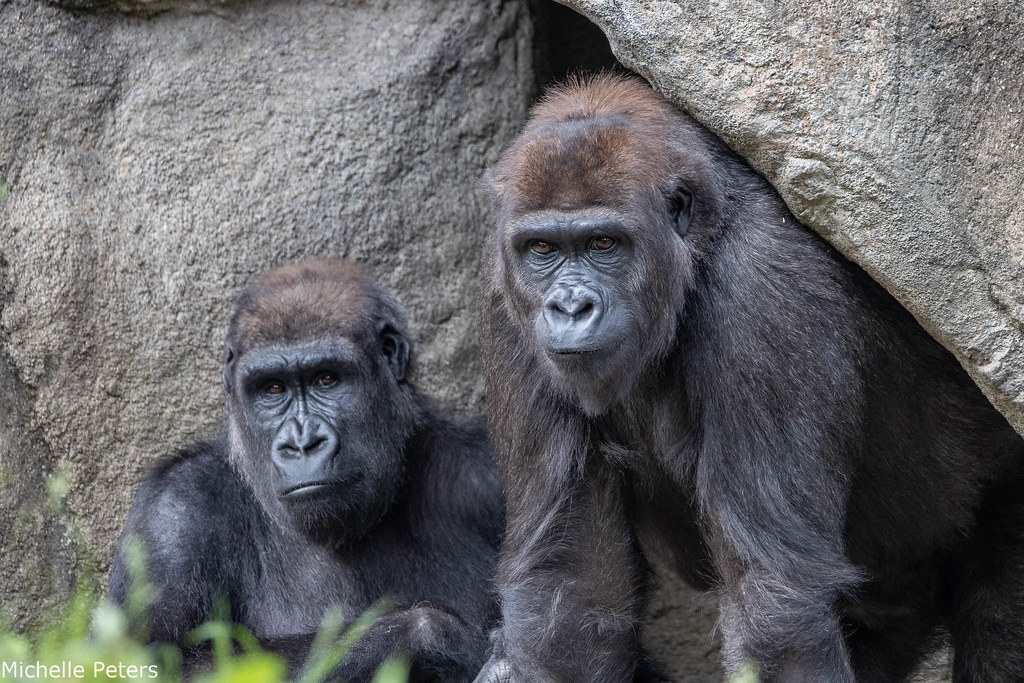The Christ Hospital and Cincinnati Zoo Team Up to Monitor Pregnant Gorilla
 (Cincinnati) June 5, 2015 – The Cincinnati Zoo has partnered with the local healthcare experts at The Christ Hospital to help monitor the pregnancy of Anju, a 14-year-old Western Lowland gorilla.
(Cincinnati) June 5, 2015 – The Cincinnati Zoo has partnered with the local healthcare experts at The Christ Hospital to help monitor the pregnancy of Anju, a 14-year-old Western Lowland gorilla.
A Diagnostic Medical Sonographer from The Christ Hospital was able to confirm Anju’s pregnancy through an ultrasound in early May. Mary Ann Waymire, R.D.M.S, R.V.T., who is volunteering her time, will continue to visit Anju every other week to conduct sonograms. Waymire will monitor the growth of the baby by taking measurements from the sonograms.
“We are attempting to take the measurements of the gorilla baby just as we would do measurements on a human baby,” said Waymire. “The process includes measuring head size, abdominal circumference, and femur lengths. We’re also monitoring fetal movement, fluid and heart rate.”
Waymire has previous experience working with animals at the Cincinnati Zoo. In 1995, she helped monitor the pregnancy of Rosie, the zoo’s first artificially inseminated gorilla. She also oversaw the pregnancy of a walrus.
Anju has been trained to voluntarily receive medical treatments, including sonograms. Anju sits comfortably while Waymire and a keeper work together to scan for images. Anju is rewarded with grapes throughout the non-invasive procedure. Vet staff at the Cincinnati Zoo is predicting the gorilla baby to arrive around Labor Day.
The Cincinnati Zoo reached out to the imaging team at The Christ Hospital Health Network for help in developing its Fetal Great Ape Ultrasound Monitoring Program, a database that will eventually provide the Gorilla Species Survival Program (SSP) with information useful for making breeding recommendations.
“The Veterinary Department at the Cincinnati Zoo has had a great working relationship with several doctors at The Christ Hospital over the years,” said Cincinnati Zoo Veterinary Director Mark Campbell, DVM. “Tom Keriakes, MD, helped us with a female gorilla with a facial and nasal mass. The Christ Hospital’s team of cardiologist Wojciech Mazur, M.D., and Jennifer Schaaf, B.S, R.D.C.S., echo lab technical director, were also a tremendous asset in the development of our cardiac ultrasound program in our great apes.”
There are about 765 gorillas in zoos worldwide including approximately 360 in the Association of Zoos & Aquariums (AZA) Species Survival Program (SSP) for this species. Western lowland gorillas are critically endangered in the wild, with less than 175,000 individuals. Due primarily to habitat destruction caused by logging, mineral mining and agricultural expansion, wild gorilla numbers continue to shrink. The bushmeat trade – the killing of wild animals to be used as human food – is also a major threat to the western lowland gorilla population throughout the Central African rainforests. Over 1,000 gorillas are illegally poached for the bushmeat trade each year. The Cincinnati Zoo supports wild gorilla conservation efforts like the Mbeli Bai Study in Nouabalé-Ndoki National Park in the Republic of Congo. The Mbeli Bai Study is the longest running research being done with wild western lowland gorillas. Through research, local education programs, publications and documentaries, the Mbeli Bai Study is raising international awareness for gorillas and their struggle for survival. For more information, visit www.cincinnatizoo.org.

